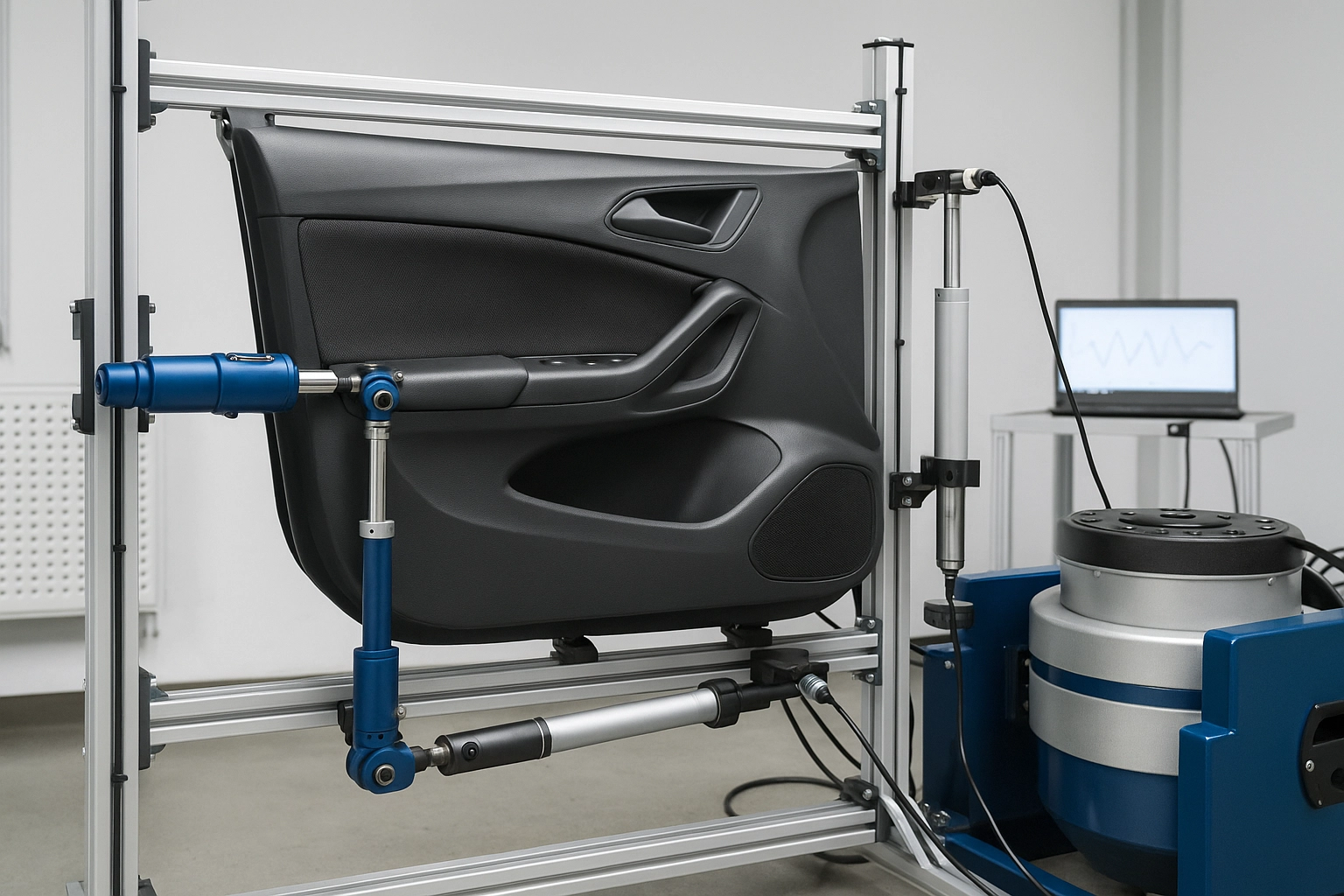GB T19951 Automotive Seatbelt BSR Vibration Testing
The GB/T 19951 standard is a crucial document for the automotive industry, specifically focusing on the evaluation of buzz, squeak and rattle (BSR) in automotive seatbelts. This testing procedure aims to identify and mitigate potential noise issues that can affect passenger comfort and safety during vehicle operation.
The GB T19951 test involves subjecting the seatbelt assembly to a vibration excitation environment to simulate real-world driving conditions. The primary objective is to assess the durability and integrity of the seatbelt under various mechanical stresses, particularly focusing on identifying any potential sources of noise that could arise from structural vibrations or component interactions.
The testing process typically begins with thorough preparation of the seatbelt specimen according to specified guidelines in GB T19951. This includes ensuring that all components are correctly assembled and free from any defects or damage prior to testing. Once prepared, the seatbelt is mounted onto a specialized vibration test rig designed specifically for automotive applications.
The rig applies controlled vibratory forces along multiple axes (typically X, Y, and Z) to simulate the dynamic loading conditions experienced by the seatbelt during typical vehicle operations such as acceleration, braking, and cornering. The intensity of these vibrations can be adjusted based on predefined test parameters outlined in GB T19951.
The duration and frequency range of the applied vibration are critical factors that influence the outcome of the test. For instance, higher frequencies may highlight issues related to high-frequency resonances within the seatbelt structure, while lower frequencies might expose problems associated with low-frequency modes that could lead to discomfort or noise complaints from passengers.
During testing, engineers closely monitor various performance metrics including displacement amplitudes, force responses, and acoustic emissions. These measurements provide insights into how well each component of the seatbelt behaves under stress and whether there are any signs of impending failure or excessive noise generation.
After completing the prescribed duration of vibration excitation, the specimen is examined for any visible damage or changes in performance characteristics compared to its initial state before testing commenced. Any detected anomalies would indicate areas requiring further investigation or modification to enhance overall product quality and reliability.
The results obtained from this comprehensive BSR test serve multiple purposes: they help manufacturers ensure their products meet regulatory requirements; assist R&D teams in refining design iterations; guide procurement departments towards selecting suppliers capable of delivering high-quality components; and ultimately contribute towards enhancing customer satisfaction by addressing important aspects like noise control.
By adhering strictly to the procedures laid down in GB T19951, laboratories can provide accurate, reliable data which is essential for maintaining industry standards and ensuring compliance with international best practices.
Applied Standards
| Standard Name | Description |
|---|---|
| GB/T 19951-2014 | This national standard specifies the method for determining the noise level of automotive seatbelt assemblies under specified conditions. |
Why Choose This Test?
- The GB/T 19951 test ensures compliance with national regulations and industry best practices.
- It provides valuable insights into potential sources of noise within automotive seatbelt assemblies.
- This testing method helps identify areas for improvement in design, materials selection, and manufacturing processes.
- By addressing BSR issues early on, manufacturers can enhance overall product quality and customer satisfaction.
Quality and Reliability Assurance
- The GB/T 19951 test ensures that seatbelt assemblies meet stringent durability standards.
- It helps in maintaining consistent quality across batches of production runs by identifying any variations in performance early on.
- This testing process contributes significantly towards building trust among consumers regarding the safety and reliability of automotive products.
The rigorous nature of this test ensures that all critical components work together harmoniously without causing unwanted noises, thereby enhancing both comfort levels inside the vehicle as well as safety standards. This commitment to excellence is what sets laboratories following GB T19951 apart in the competitive landscape today.





